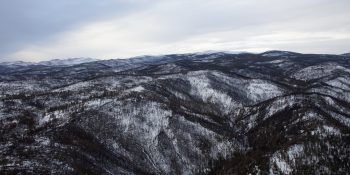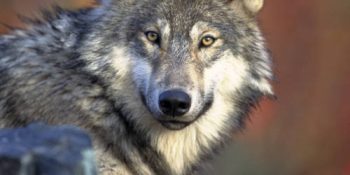On 20-year anniversary, Forest Service Roads Rule remains an unrealized opportunity
Missoula, MT – January marks the 20-year anniversary of a Forest Service rule meant to rein in the agency’s vast, unsustainable network of roads—mostly dirt, and the serious environmental damage they cause. Commonly referred to as the “Roads Rule,” its purpose is to reduce, or rightsize, the sprawling forest road system— a legacy of logging, grazing, mining and poorly-managed motorized recreation. After two decades, progress has been anemic overall, and for most of the 193 million acres managed by the Forest Service, the agency has yet to identify a minimum road system that it can afford to maintain and that is environmentally sustainable. Now is the time to make good on the Roads Rule.
When the Forest Service first enacted the Roads Rule, there were over 384,000 miles of roads resulting in serious harm to fish and wildlife. Today, 20 years later, there are still over 370,000 miles—representing just a 3.6 percent decrease in miles. And the lack of agency funding leaves 90% of these miles of road unmaintained. The intent of the Roads Rule was to move the forest road system toward a more “sustainable” condition, one that balanced ecological, economic, and social needs. Toward this end, the Forest Service made some progress—fixing over 1,000 road/stream crossings to reconnect fish habitat, and removing 900 miles of road in a single year. In addition, until 2018 new road construction had been on a downward trajectory. Yet, overall achieving a road system that is both environmentally sustainable and affordable has languished. The persistent lack of funding, coupled with climate change, puts that goal further out of reach. In addition, due to the Forest Service’s continued emphasis on wildfire suppression and timber production, the agency is now building more roads, even as it removes others.
“Altogether, the Roads Rule is a policy that has yet to be realized or meaningfully implemented,” said Sarah McMillan, Conservation Director at WildEarth Guardians. “After 20 years the Forest Service road system is still as unwieldy as ever, still choking streams with sediment, and still fragmenting habitat that wildlife need to thrive. In the midst of the dual climate and extinction crises, we ask the incoming Secretary of Agriculture Vilsack to implement the Roads Rule to remove roads, improve wildlife habitat, and improve water quality.”
“Roads chop up wildlife habitat on a landscape scale, to the great detriment of grizzly bears, spotted owls, wolves, elk, and many other species,” said WildEarth Guardians’ Chris Krupp “If wildlife are to have any chance to thrive and adapt to climate change, the Forest Service must greatly step up removing roads, not replacing them or building more.”
“The Forest Service has a backlog of over $3 billion of road-related deferred maintenance leading to hard choices about which roads don’t get fixed each year,” said Marlies Wierenga, with WildEarth Guardians. “This Russian roulette approach means road failures deliver a big punch – blocking access for recreationists, dumping sediment into salmon and bull trout streams, and costing exponentially more to fix in the long run.”
“Due to its myopic pursuit of trying to stop climate-driven wildfires across vast landscapes, the Forest Service believes most every road is necessary to reach remote areas for logging and fire suppression,” said Adam Rissien with WildEarth Guardians. “The agency’s hubris ignores research showing people cause a vast majority of wildfires, and that roads provide the access for many of those ignitions.”
Background: While extractive industry always demanded road access across national forest lands, construction rose exponentially after World War II. Congress supported the logging industry by dedicating millions of taxpayer dollars to the Forest Service to construct forest roads everywhere and anywhere; through floodplains, up river valleys, along steep hillsides and over mountain tops. The desire to cut trees was the primary driver for road construction with little thought or planning as to the impacts from the roads.
By the late 1990’s, as timber markets changed, the Forest Service began to acknowledge the growing body of evidence illustrating the harmful consequences from its poorly located, constructed, and managed forest road system. At the same time, the billions of dollars in Congressional appropriations that largely paid for building the road system were decreasing at a rapid pace. Conservation groups, fueled by a groundswell of public support, pushed the agency to change. As a result, in 1998 the Forest Service initiated a process to overhaul its road management policies. The multi-year effort resulted in the landmark 2001 Roadless Rule, that most people are familiar with, protecting millions of acres of national forests from logging and road building. At the same time, then Forest Service Chief Mike Dombeck signed the Road Management Strategy Rule and Policy that went into effect on January 12, 2001, otherwise known as the “Roads Rule.”
The “Roads Rule” was developed to deal with the vastly oversized and harmful forest road system. It required the Forest Service “to set a standard that each forest identify the minimum road system required to balance access objectives with ecosystem health goals; and to use a science-based roads analysis to identify the road network needed to serve the public and land administrators.” The new Roads Rule also required the Forest Service to identify unneeded roads for decommissioning, or other uses, and to prioritize those that pose the greatest risk to public safety or environmental quality. The Roads Rule’s intent was to move the forest road system toward a more “sustainable” condition, one that balanced ecological, economic, and social needs.
Since its emergence, the field of road ecology has exposed the magnitude and breadth of ecological impacts attributable to forest roads. We now understand that transportation infrastructure harms aquatic and terrestrial environments at multiple scales. In general, the more roads and motorized trails, the greater the impacts. The construction, presence and use of forest roads can dramatically change how entire watersheds function, which leads to reductions in both quantity and quality of aquatic habitat. Roads produce both chronic and catastrophic erosion and sediment. Every time it rains, sediment from road surfaces washes into streams. Roads also harm wildlife in a number of ways, including: direct mortality (poaching, hunting/trapping), changes in movement and habitat-use patterns (disturbance/avoidance), as well as indirect impacts including altering adjacent habitat and interference with predator/prey relationships. Some of these impacts result from the road itself, and some result from the uses on and around the roads (access). Ultimately, studies show that roads reduce the abundance, diversity, and distribution of several wildlife species. For more information, see WildEarth Guardians special report, “The Environmental Consequences of Forest Roads and Achieving a Sustainable Road System, March 2020.”
SPREAD THE NEWS
COMMENT, Like, Follow & SHARE @I70Scout
CURRENT EDITION
WEATHER & TRAFFIC PUZZLES RECENT NEWS ADVERTISE WITH US










